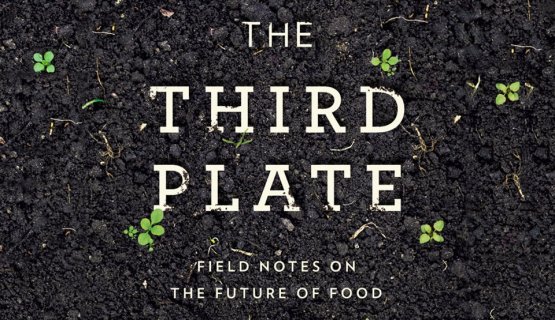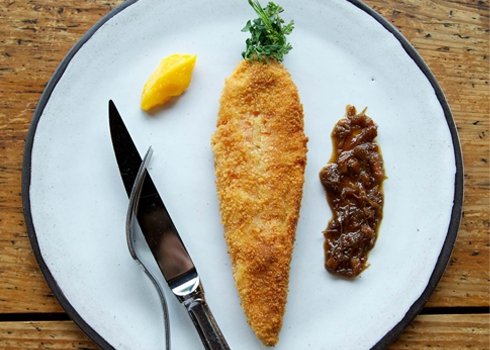29-11-2015
The revolution of The Third Plate
In his latest book, Dan Barber presents a new diet model, uniting taste and sustainability

With his latest book, American chef Dan Barber goes beyond the "farm-to-table" philosophy inspiring his Blue Hill, and presents a new, revolutionary way of eating
Remember the first computer or the first mobile phone? How our way of using technology has changed over the last few decades? It first was macro, then micro and now we’re in the middle of the transition towards nano, the new frontier offering possibilities that were previously impossible to imagine. What if we were experiencing a similar revolution in our way of eating too? Dan Barber, chef at Blue Hill in New York, explains this well in his latest book “The Third Plate”.
Let’s imagine the history of eating as a sequence of geological eras and let’s concentrate on the last 60 years, from after WWII to our days. The first era coincides with “the first plate”, that is to say the classic model with the main course, historically based on meat/fish plus a side/garnish/sauce. This is the model that is most familiar to us and it is what you still learn in all catering schools across Italy, the one presented every day in our restaurants.
This model, however, has something that makes it inadequate for the challenge of feeding the planet. It is decisively out-dated based on the discoveries made by food science recommending a greater presence of vegetables in our meals and at the same time it is a model requiring a high consumption of natural resources.
[[ ima2 ]]Over the last decade, even though it has remained a niche, “the second plate”, established itself, that is to say starting from the same model as the first, but with better-selected raw materials. The revolution mainly affected the choice of suppliers, favouring organic, local products, short supply chain, more sustainable breeding farms and farming. Was this the reply to the health and sustainability challenges?
For sure, this trend improved the situation in part yet without bringing sufficient benefits and it is currently not capable of satisfying today’s and tomorrow’s food challenges. Hence comes “the third plate”, already a revolution in the US, that is to day a new food model capable of responding to the challenge of eating tasty food while making the best possible compromise in terms of health and planet. What’s so revolutionary about this new main course? The fact it overturns the classic model and focuses on the vegetal world, moving meat, fish and other animal products to the background.
If we multiply this model on a global scale we’ll have a universal benefit in terms of lower health costs, better health and wellbeing for the population and most of all a lower impact on the environment in terms of consumption of resources such as clean water and fertile soil and greenhouse gas emissions and a reduced demand of animal products.
[[ ima3 ]]Over the past month, the real heritage of EXPO Milano 2015 has been discussed at length, and while for some it will be mostly made of the memories of unusual food and restaurants, one of the most important effect was, without doubt, the great attention paid by newspapers, TV, conferences and workshops to the environmental impact of our dietary choices, food waste, pollution associated with food production, a more sustainable use of resources.
Given this attention, consumers’ sensitivity towards these themes has reached an all time high. Being aware of this challenge today requires courage and a questioning of all the dogmas of classic and traditional cooking, developed over decades of abundance and scarce knowledge of the health and environmental effects of the food we eat daily.
This is the right time for the food sector and especially for the restaurant industry to turn the page, to be ready and not unprepared, to take on the current challenges, which will also be those of the future.

A carrot becomes the main dish. Paired with beef sauce
Green
Tecniche, ingredienti e iniziative della ristorazione attenta all'ambiente e agli ideali di Expo 2015, viste da Lisa Casali
Environmental scientist and sustainable cooking expert, she's the author of blog Ecocucina on D di Repubblica and of 5 books including “Tutto fa brodo”, "Autoproduzione in cucina" and "Cucinare in lavastoviglie"
Author's articles list